FlowersAxel Heiberg Island supports a beautiful, even spectacular flora. Flowers are most abundant in early July, when masses of purple saxifrage make the tundra appear red. Later in the month yellow mountain avens, then arctic fireweed take over as the dominant species. Particularly impressive is, however, the arctic poppy which, despite of its considerable size, blossoms even in the strongest of winds. Then there is alpine sorrel which has leaves rich in vitamin C and is used by Inuit to prevent scurvy. |
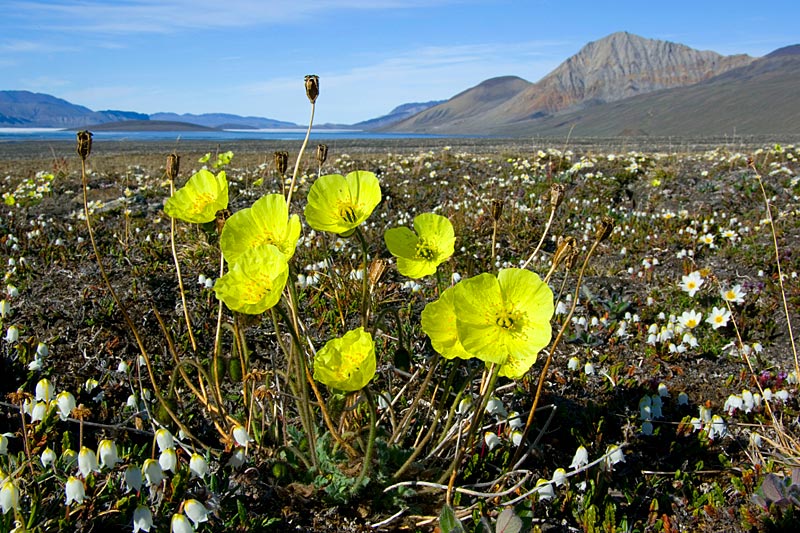 Arctic poppy (Papaver radicatum) | 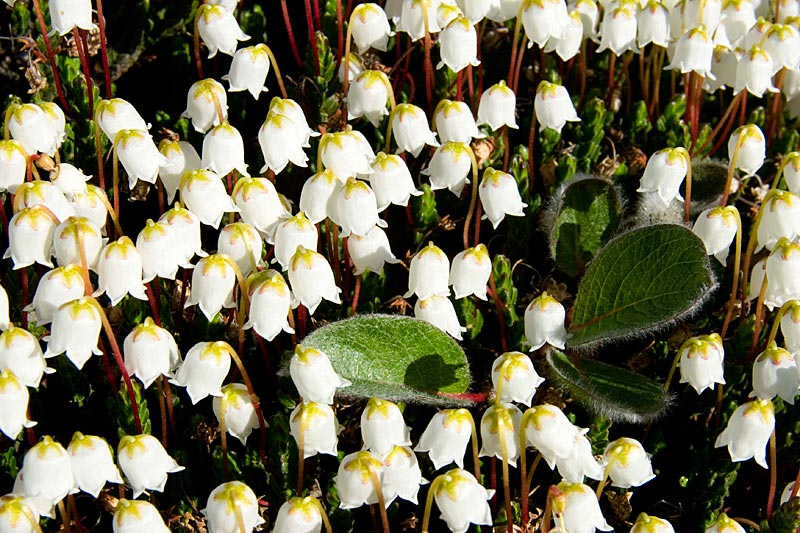 White arctic bell heather (Cassiope tetragona) | 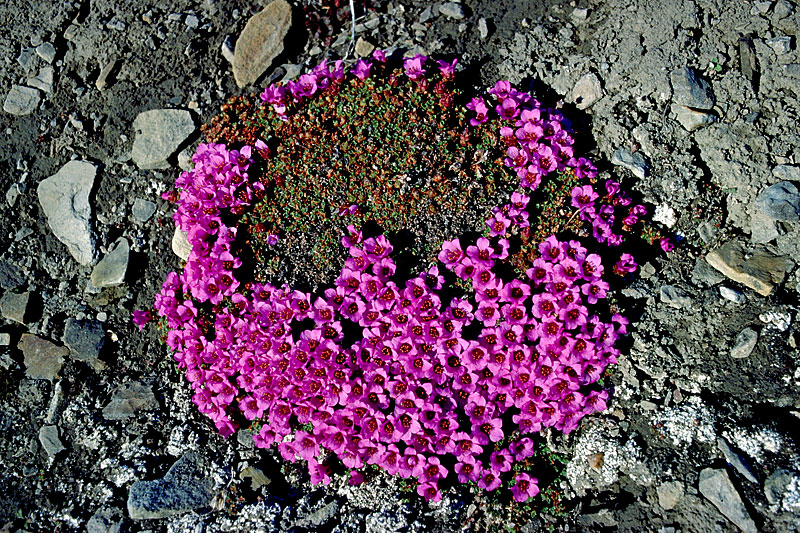 Purple saxifrage (Saxifraga oppositifolia) | 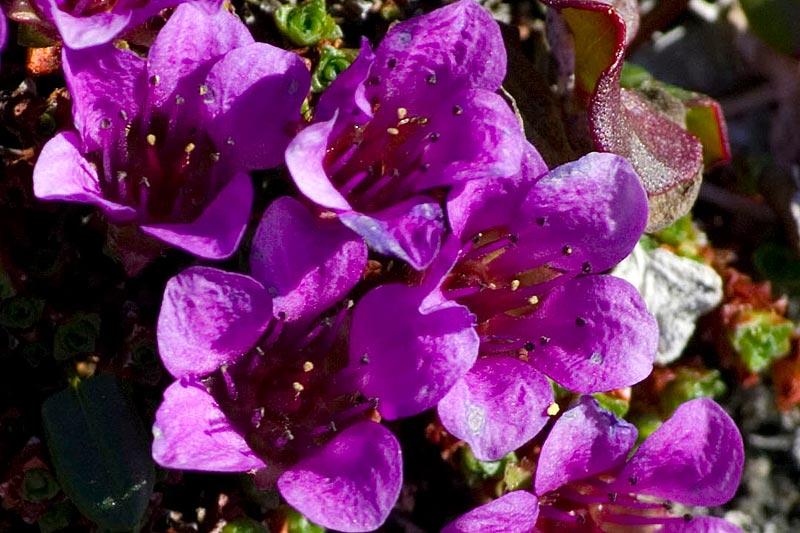 Purple saxifrage, detail (Saxifraga oppositifolia) |
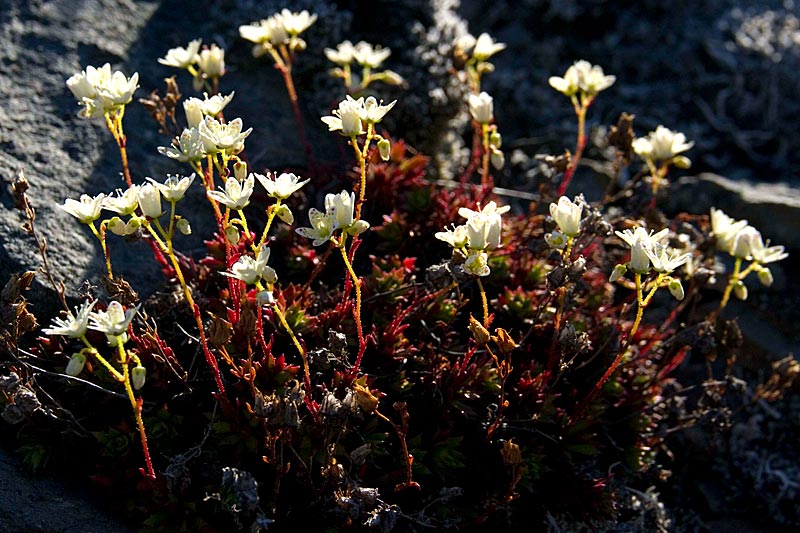 Prickly saxifrage (Saxifraga tricuspidata Rothb.) | 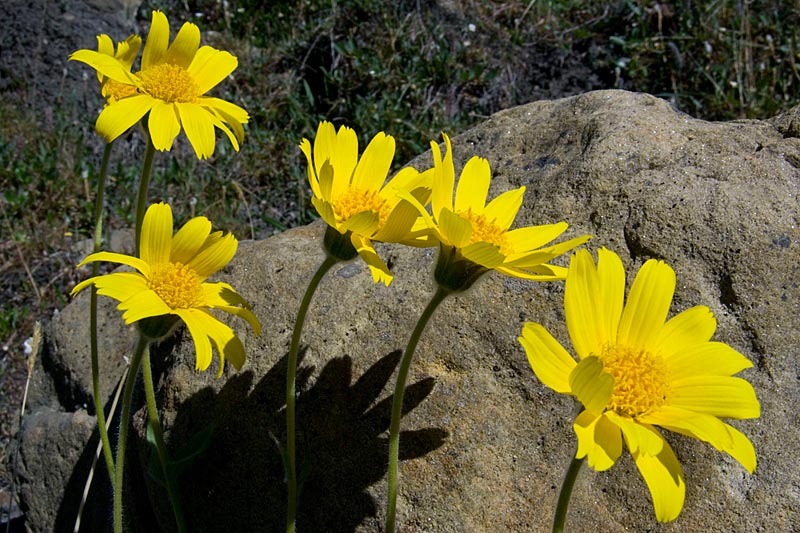 Alpine arnica (Arnica alpina) |  Greater stitchwort (Stellaria holostea) | 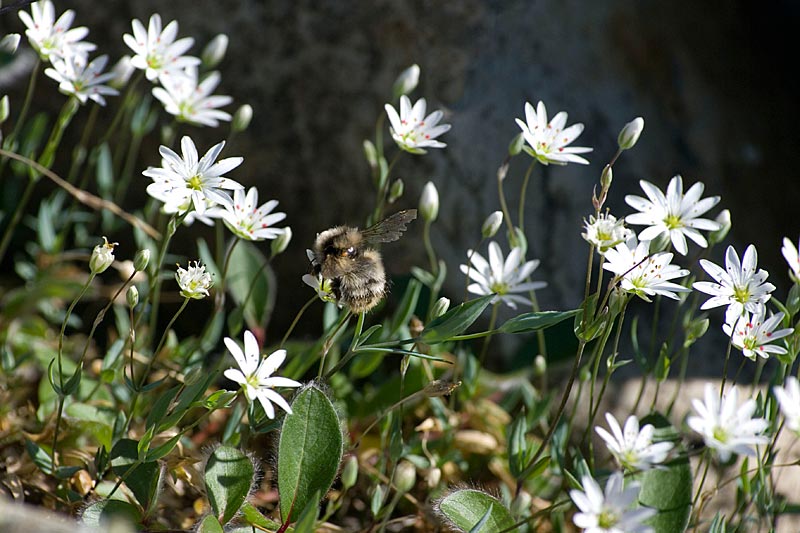 Greater stitchwort (Stellaria holostea) with bumble bee |
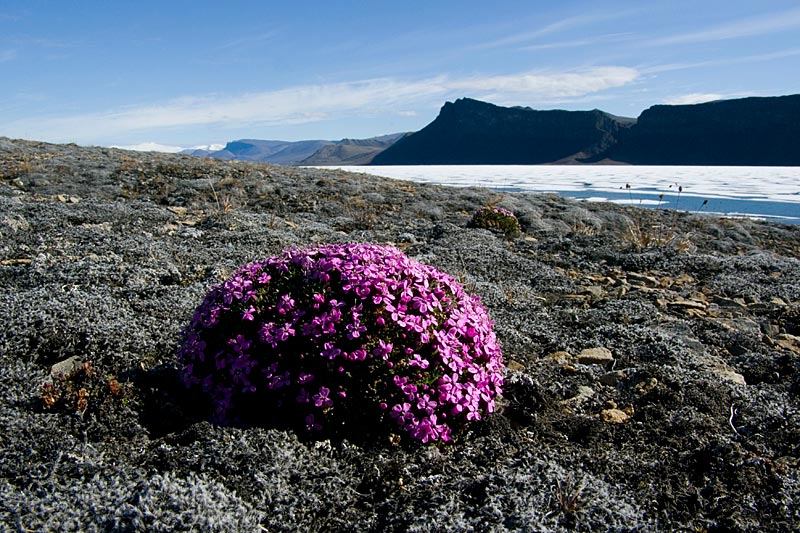 Moss campion (Silene acaulis) | 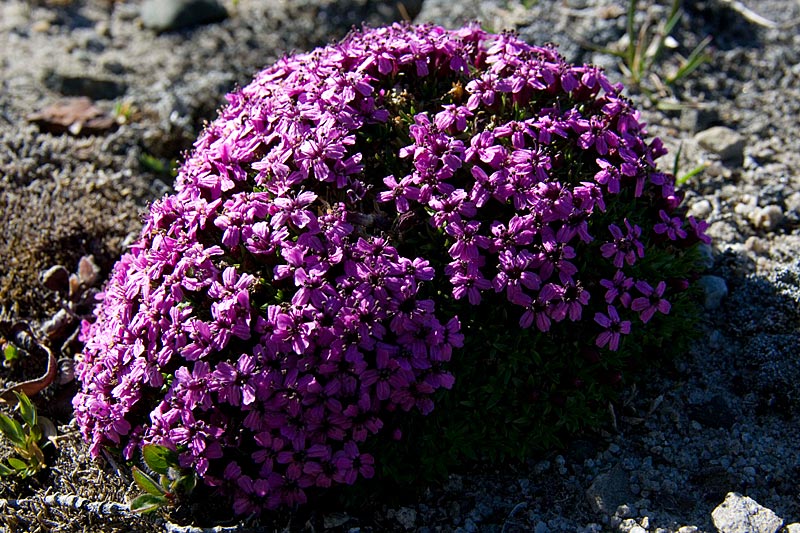 Moss campion, close-up (Silene acaulis) |  Capitate lousewort (Pedicularis capitata) | 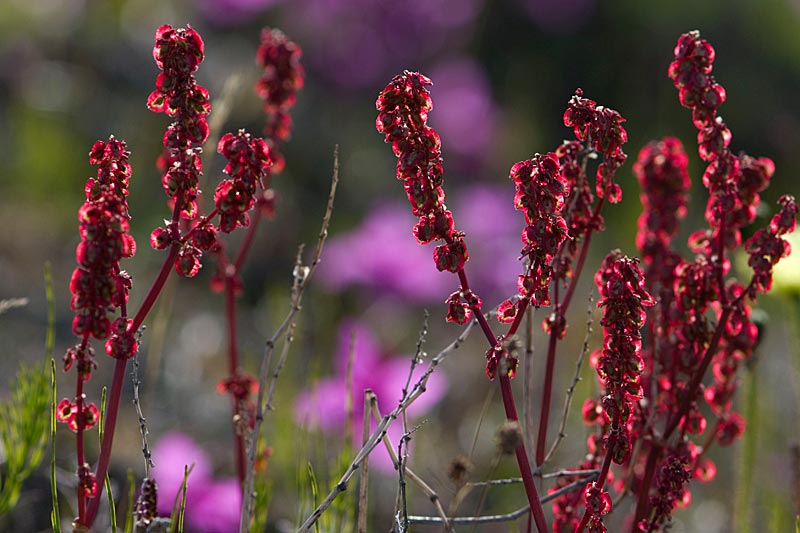 Alpine sorrel (Oxyria digyna). |
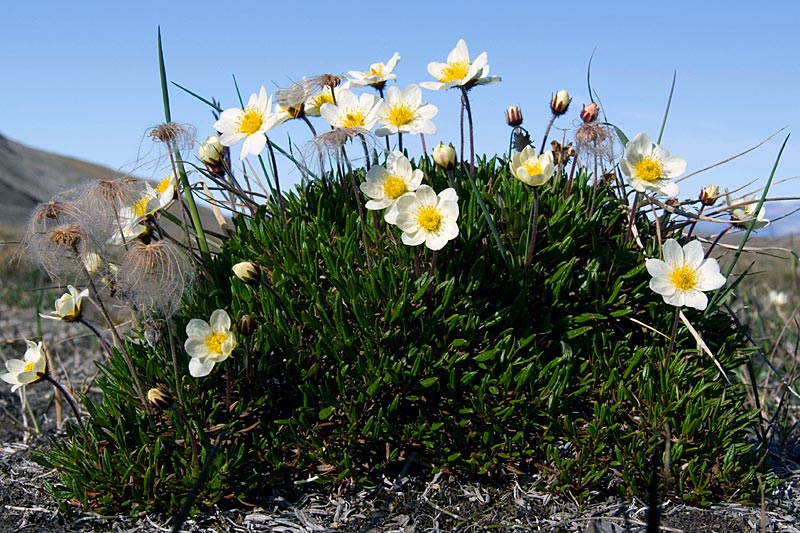 Mountain avens (Dryas integrifolia) | 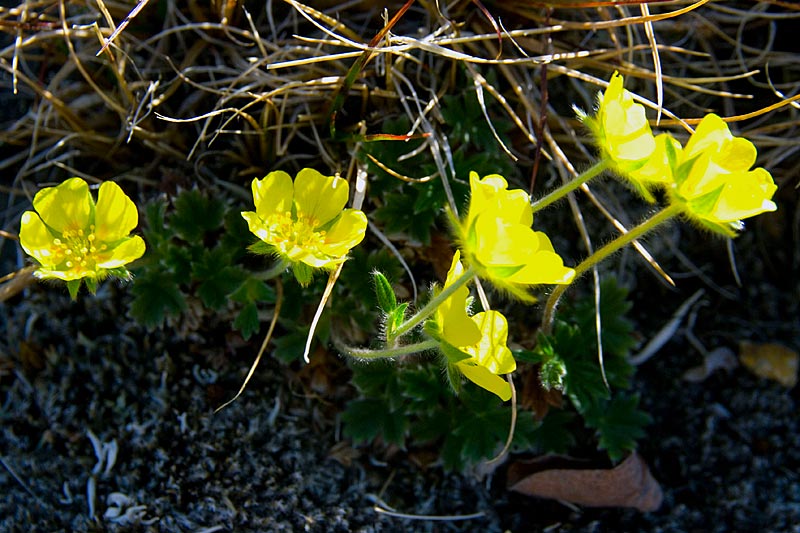 Arctic cinquefoil (Potentilla hyparctica) | 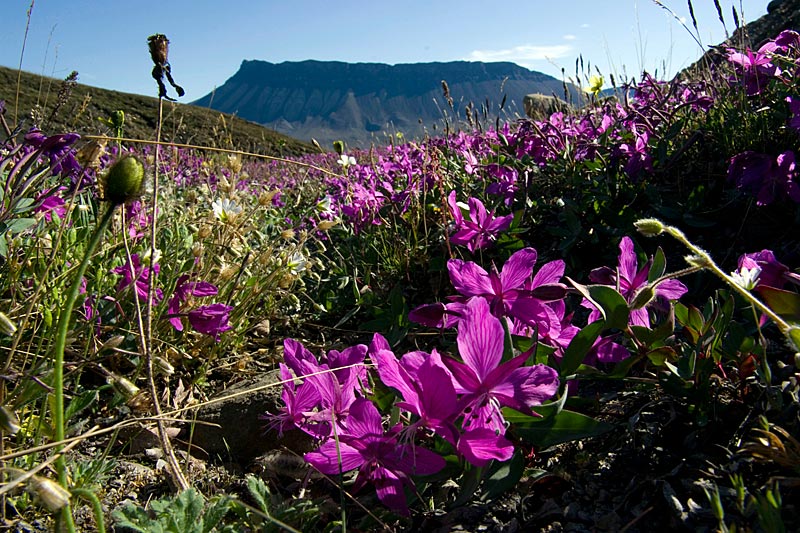 Arctic fireweed (Chamaenerion (Epilobium) latifolium) | 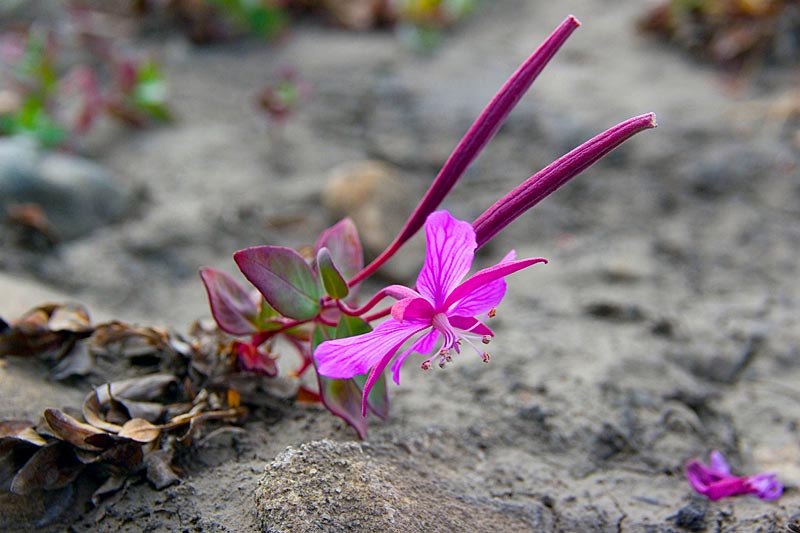 Arctic Fireweed late in the season (Chamaenerion (Epilobium) latifolium) |
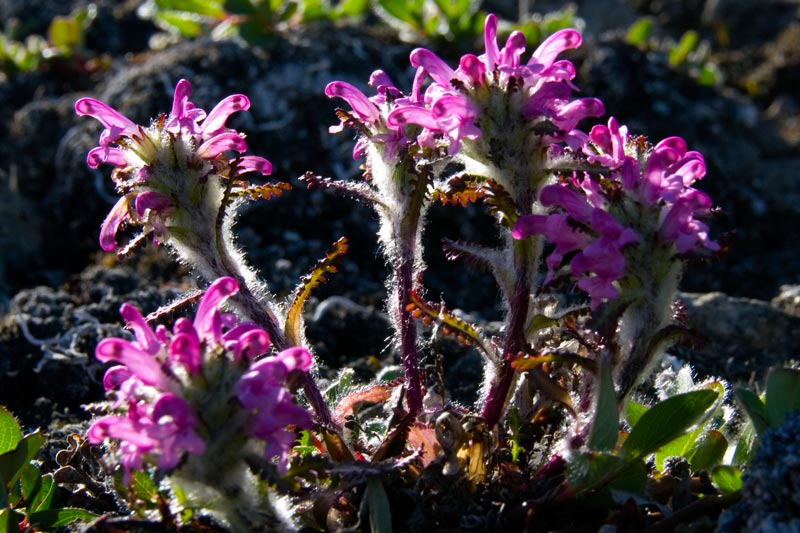 Hairy lousewort (Pedicularis hirsuta) | 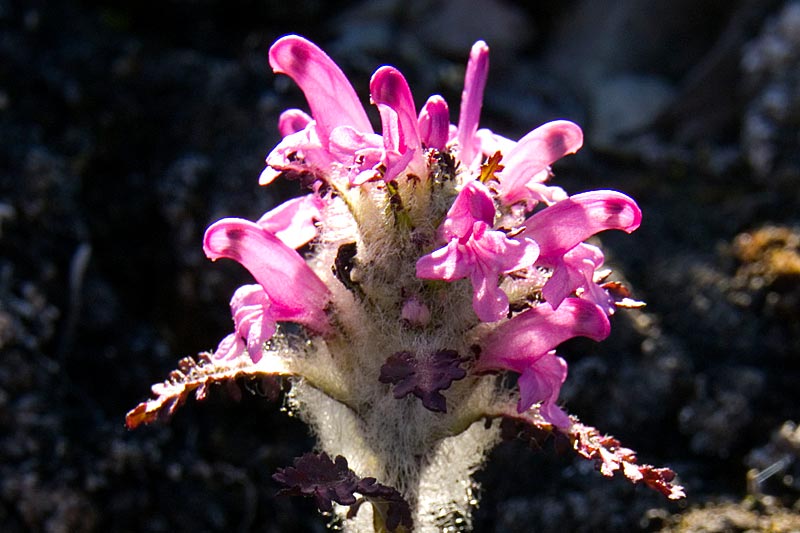 Hairy lousewort close-up (Pedicularis hirsuta) |  Draba oxycarpa Sommerf. | 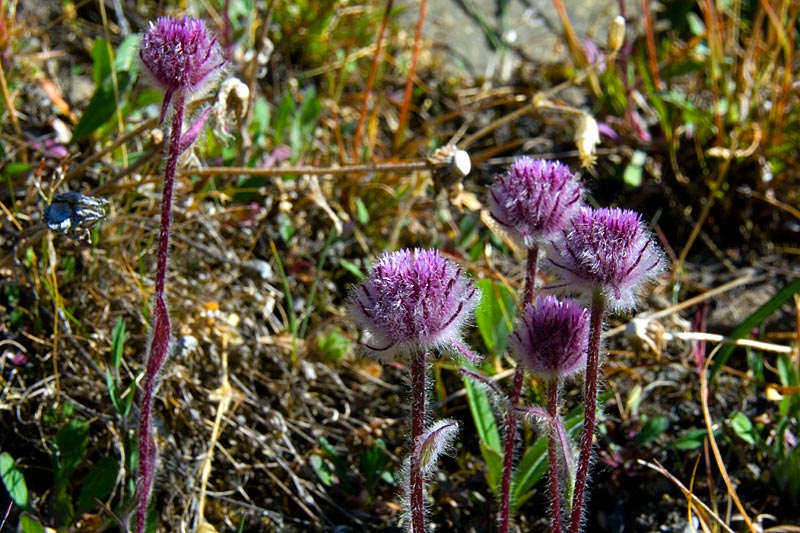 Erigeron spp., family Asteraceae |
| Photos Jürg Alean |